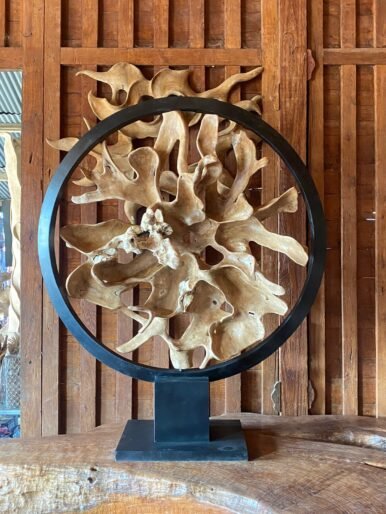How Bali’s Architectural Principles Inspire Eco-Friendly Homes

Sustainable Living the Balinese Way
Balinese architecture teaches us that homes can be both beautiful and sustainable. By using local materials, embracing natural light and ventilation, and integrating with the environment, we can create homes that are not only functional but also deeply harmonious with nature. Each of these design principles can inspire us to live more mindfully, reducing our environmental impact while creating spaces that support our health and well-being.
Bali’s architecture is celebrated for its harmony with nature, a reflection of the island’s deep cultural respect for the environment. This connection is particularly evident in traditional Balinese design, which prioritises sustainable materials, natural ventilation, and a seamless blend with the surrounding landscape. For those looking to make eco-friendly home choices, Bali’s architectural principles offer valuable insights on building sustainable and beautiful living spaces. Let’s explore some key elements of Balinese design and how they can inspire eco-conscious homes worldwide.
1. Embrace Natural Ventilation
Traditional Balinese homes are designed to work with the island’s warm, tropical climate. Open-air layouts, large windows, and strategic cross-ventilation allow for natural cooling, reducing the need for air conditioning. This emphasis on ventilation not only makes homes more comfortable but also minimizes energy consumption.
Design Tip: Opt for high ceilings, large windows, and open layouts in your own home to improve airflow. Louvered windows or slatted doors can help direct the breeze indoors, while strategically placing openings on opposite walls can create a natural flow of fresh air, reducing reliance on artificial cooling.
2. Use Sustainable Materials
Bali’s traditional homes are built using locally sourced, sustainable materials like bamboo, coconut wood, and alang-alang (cogon grass) for roofing. These natural resources are renewable and have a low environmental impact compared to processed materials.
Design Tip: When possible, choose sustainable materials for your home construction or renovations. Bamboo, for example, is fast-growing and incredibly strong, making it a great eco-friendly alternative for flooring, furniture, and even structural elements. Reclaimed wood and locally sourced stone are also excellent options that add a warm, natural look while supporting sustainability.
3. Integrate with the Natural Landscape
In Balinese architecture, homes are often built to blend seamlessly with the surrounding environment. Gardens, trees, and even small ponds are integrated into the design to create a sense of harmony with nature. This approach not only enhances the beauty of the home but also preserves local biodiversity.
Design Tip: Plan your garden to complement your home’s layout, and consider leaving areas of your yard untouched to support native plants and wildlife. A green roof, where plants grow on the roof surface, can also help reduce heat, lower energy costs, and increase biodiversity. Choose native plants that require minimal water and maintenance for an eco-friendly landscape.
4. Maximise Natural Lighting
Balinese design values sunlight not only for its warmth but also for its ability to create a bright, inviting space. Large windows, skylights, and open-air areas allow natural light to flow through the home, reducing the need for artificial lighting.
Design Tip: Incorporate large windows and glass doors into your home’s design to let in as much natural light as possible. Consider using light-colored walls and reflective surfaces to brighten up interiors. Solar tubes or skylights can also bring sunlight into darker areas of the home, reducing the need for daytime lighting and saving energy.
5. Opt for Minimalism and Flexibility
Traditional Balinese homes are built with minimalism in mind, focusing on essentials and avoiding excess. Each space is thoughtfully designed for flexibility, allowing for multiple uses throughout the day. This minimalist approach reduces material consumption and encourages a mindful lifestyle.
Design Tip: Adopt a minimalist approach in your home design by focusing on multifunctional spaces and furniture. Use modular furniture or sliding doors to create adaptable spaces that suit various needs, like a dining room that converts into a workspace. By minimizing clutter and focusing on quality over quantity, you’ll reduce waste and create a more sustainable, intentional space.
6. Harness Solar Power
While traditional Balinese homes may not have used solar power, the principles of self-sufficiency and working with natural resources align perfectly with modern solar energy solutions. Installing solar panels can significantly reduce your carbon footprint and help you generate clean energy.
Design Tip: If feasible, consider installing solar panels on your roof to power your home with renewable energy. Solar panels work well with the open, sunny spaces typical of Bali-inspired architecture, and they can dramatically reduce both your energy bills and environmental impact. Pair solar power with energy-efficient appliances to create a highly sustainable household.
7. Water Conservation and Greywater Systems
Bali’s traditional water temples and systems highlight the cultural importance of water conservation and responsible use. Today, many eco-friendly homes adopt similar practices, using greywater systems and rainwater harvesting to reduce water waste.
Design Tip: Incorporate a rainwater harvesting system to collect and store water for outdoor use, such as watering plants or washing patios. Additionally, consider installing a greywater recycling system to redirect water from sinks and showers to garden irrigation. These systems not only reduce water consumption but also lower utility costs and contribute to a sustainable water cycle.
8. Integrate Zen Spaces for Mindful Living
Balinese homes often feature tranquil spaces designed for meditation, prayer, or quiet contemplation. These spaces not only enhance well-being but also encourage mindful, intentional living—a core aspect of sustainability.
Design Tip: Create a small zen corner or garden within your home to serve as a retreat for relaxation and mindfulness. Use natural elements like stones, plants, and soft lighting to enhance the space. This intentional design approach fosters mental well-being and encourages a slower, more eco-conscious lifestyle.
Whether you’re building a new home or making eco-friendly changes to your current space, the wisdom of Balinese design offers practical solutions that respect both the environment and our quality of life. Embrace the spirit of sustainable living inspired by Bali, and create a home that stands the test of time, not only in style but in sustainability.







